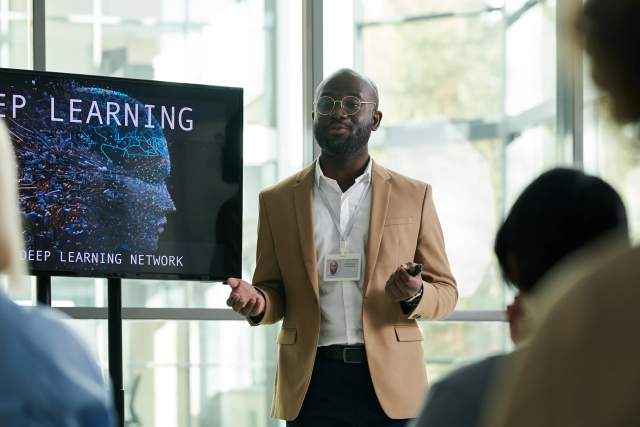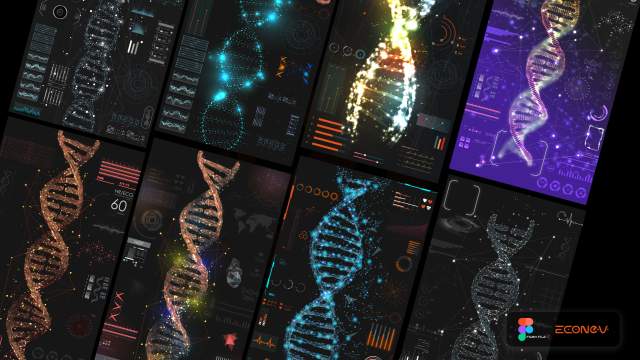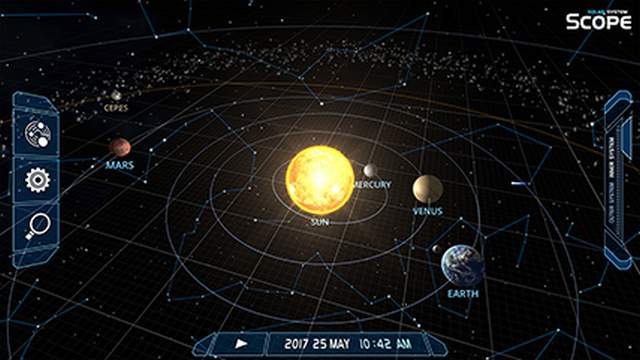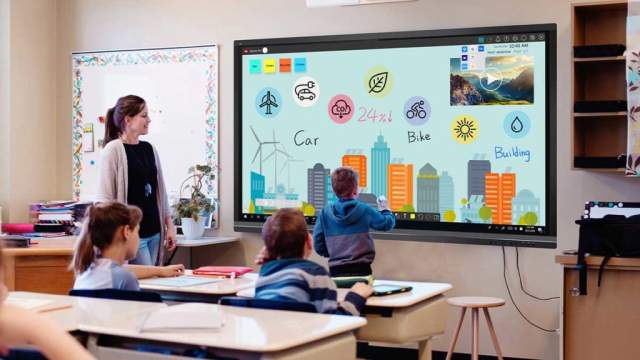Okay, let’s be real for a sec – grabbing and holding students’ attention when you’re trying to teach complex science stuff? It can seriously feel like trying to catch lightning in a bottle. You know, from those abstract physics theories to super intricate biology things, making science actually click for every single student is a constant hustle. But hey, what if I told you there’s a lively, dynamic, and honestly pretty effective tool just waiting to spark up your science classroom? Let’s talk about the world of digital comics.

Yeah, forget that old-school image of dusty, static comic books. We’re talking about dynamic, interactive, and visually awesome digital comics made specifically for learning. As educational technology keeps moving forward, these e-learning tools are turning out to be powerful buddies for teachers trying to boost science education engagement. They mix cool stories with clear pictures, totally changing how students connect with and get science. Ready to dive in and see how?
So, What Exactly Are Digital Comics for School?
Basically, educational digital comics use that format we all know – panels, characters, speech bubbles, narration – but it’s all delivered on a screen. Unlike regular print comics, though, these can pack in a ton of interactive goodies. Think things like embedded videos that explain a concept a bit more, clickable links to other handy resources, maybe some simple animations showing how a process works, or even little mini-quizzes right there in the story to check if everyone’s following along.

They cleverly use ideas from multimedia learning, giving information through both pictures and words. And it’s not just about being fun; it’s a smart strategy using visual storytelling in education to make tricky info easier to digest and remember. Just picture a comic panel where you click on a plant cell diagram and labels pop up explaining the parts, or a story about chemical reactions that shows little animations of molecules bonding. That’s the kind of cool interactive education power you get with digital comics.
Why Use Digital Comics for Science? What Are the Perks?
So, why think about swapping a textbook chapter for a comic? Well, the advantages are pretty convincing, and they really hit on how digital comics enhance science learning.
- Engagement Through the Roof: Let’s face it, comics just pull you in. That mix of story, characters, and visuals is naturally engaging. This seriously bumps up the impact of digital comics on science education engagement, shifting kids from just sitting there to actually getting involved. Ever notice how students suddenly perk up when there are visuals? Comics basically supercharge that effect.
- Making Complex Stuff Simpler: Science is loaded with abstract concepts and detailed processes. Digital comics are fantastic for science visualization, breaking down tough topics like mitosis, chemical bonding, or how circuits work into visual steps that are way easier to follow. Seeing something happen visually often makes it click much better than just reading about it, right?
- Helping Out All Kinds of Learners: We all know students learn in different ways. Comics can be a huge help for visual learners, giving them_context and clarity that a wall of text might not. This part of visual learning in science education means more students can actually connect with the material.
- Making Things Stick: That combo of pictures, story, and short bits of text really helps with memory. Complex info wrapped up in a story is often just plain easier to remember later on.
- Sparking Curiosity: A really good science comic can get students asking questions and wanting to dig deeper into a topic, nurturing that genuine scientific curiosity we love to see.
Digital Comics Across Different Science Fields
And the cool thing is, digital comics are super versatile – you can pretty much adapt them for any science subject.
- Biology: Need some solid examples of digital comics for biology education? Just picture following a red blood cell on its journey through the body, seeing photosynthesis happen from a leaf’s point of view, or understanding DNA replication through characters and visual metaphors. Comics can bring ecosystems, evolution, and cells to life! Pretty neat, huh?
- Chemistry: Using digital comics as tools for learning chemistry can be incredibly helpful. Think about characters acting as atoms forming bonds, visual stories explaining stoichiometry, or even comic-style guides walking through lab steps. Those abstract ideas like atomic structure or reaction types suddenly feel a lot more real.
- Physics: Thinking about effective ways to integrate digital comics in physics teaching? How about a comic that explains Newton’s Laws using stuff kids can relate to, like skateboarding or playing pool? Concepts like force, motion, energy, and waves can be shown in a dynamic way, making them feel way less scary and more intuitive.

Making Science Interactive and Fun
Okay, but here’s where it gets really cool: when digital comics become more than just static pages. Interactive digital comics for enhanced science understanding use tech to create really immersive learning moments.
Think about clicking on a panel to watch a quick animation of planets orbiting, or answering multiple-choice questions embedded right in the story to help a character solve a science puzzle, or even tweaking variables in a little simulation that’s part of the comic’s plot. This is basically how to use digital comics for interactive science experiments, even if they’re virtual ones. You can build in simple simulations or “choose your own adventure” style paths related to experiments. It adds a bit of gamification, turning learning from a task into more of an engaging quest. It’s a fantastic example of interactive education done right.

Digital Comics vs. Good Ol’ Textbooks
Now, let’s be clear – we’re not suggesting you toss out textbooks completely. Traditional texts definitely offer depth, cover a lot of ground, and give structured info. But, when you do a comparison of digital comics vs traditional textbooks in science education, comics have some clear wins in certain spots:
- Engagement: Honestly, digital comics usually win, hands down, at grabbing and keeping student interest.
- Visual Clarity: Those complex processes? Often much easier to get through the step-by-step visuals in comics than dense text or single static diagrams. Think of them like educational comic books that got a digital upgrade.
- Accessibility: Comics can help break down language barriers and give a boost to students who find heavy reading tough. The visual context is key.
- Interactivity: Digital comics can offer interactive features (like quizzes, animations, links) that plain old textbooks just can’t.
- Conciseness: They can often get core ideas across more quickly and memorably.
Getting Started: How to Actually Use Digital Comics in Class
Okay, so how do you bring digital comics into your classroom without having to redo everything? No worries, it’s easier than you think. Here are some effective ways to integrate digital comics (and these work great for physics, biology, and chemistry!):
- Kick Off a Topic: Use a short comic to introduce a new concept in a visual and fun way before you dive into the nitty-gritty details.
- Reinforce & Review: Maybe assign a comic after a lesson to lock in the key points, or use one as a fun review activity before a test.
- Explain the Tricky Stuff: When you hit a really tough topic (like protein synthesis or thermodynamics, maybe?), pull out a comic to give a clear, step-by-step visual walkthrough.
- Lab Prep/Recap: Use comics to visually explain lab procedures or go over safety rules.
- Get Students Creating: Challenge your students to make their own science comics! It’s an awesome way to see what they’ve understood and let them get creative. Plus, it taps into some cool technology in education ideas.

Just start small. Pick one topic that’s usually a struggle and find or create a comic for it. See how your students react! You might be surprised.
Finding and Even Making Digital Science Comics
Alright, ready to jump in? Good news – finding quality science comics is actually getting easier. Some of the best digital comic platforms for science educators include:
- General Comic Creation Tools: Platforms like Pixton EDU or Storyboard That let you and your students create your own comics using libraries full of characters, backgrounds, and props. These are really flexible online learning resources.
- Specialized Science Comics: Keep an eye out for websites or organizations focused on science communication through comics. Sometimes universities or science outreach programs make these. (Just searching for “science webcomics” or “biology comics” can turn up some gems).
- Publisher Platforms: Some educational publishers are starting to weave digital comic formats into what they offer online.
And hey, if you’re feeling a bit creative yourself, exploring techniques for creating engaging science digital comics can be super rewarding. Just focus on:
- Clear Storytelling: Even a simple story helps.
- Scientific Accuracy: Gotta make sure the science is right!
- Visual Clarity: Keep things uncluttered and easy to follow.
- Relatable Characters: Even simple characters make it more engaging.
- Balancing Text and Images: Let the pictures do a lot of the work; keep the text short and sweet.
The Proof: Do Digital Comics Actually Work?
So, is there evidence that this stuff works? Well, the support for using comics in education is definitely growing. Studies and teacher stories often point towards student performance improvement with science digital comics. While we’re still waiting on more large-scale number crunching, case studies on digital comics in science curricula frequently mention things like:
- More student participation and genuine enthusiasm.
- Better understanding of those complex or abstract topics.
- Improved memory of the information.
- Kids actually having a more positive attitude towards science.

Honestly, the impact of digital comics on science education engagement is often something teachers notice right away. When students are truly interested and involved, you know deeper learning is more likely to happen.
What’s Next: The Future of Digital Comics in School
And trust me, this whole journey with digital comics in education is really just getting started. Some exciting trends in digital comics for educational purposes to watch out for include:
- Even More Interactivity: Get ready for cooler embedded simulations, stories with branching paths, and feedback tailored to the student.
- AR/VR Coming into Play: Imagine comics that literally jump off the screen into augmented or virtual reality experiences!
- AI Helping Out: Tools that could make it easier for teachers or even students to generate parts of comics.
- More Subjects Covered: Expect to see more high-quality comics made specifically for all sorts of STEM learning resources.

Wrapping It Up: The Next Chapter in Science Learning
So, let’s wrap this up. Basically, digital comics offer a really powerful, engaging, and visual way to teach science. They aren’t a magic wand, sure, but they are an incredibly versatile tool that can seriously boost understanding and excitement, tackling that core challenge of science education engagement. By making tricky topics simpler, reaching all kinds of learners through visual learning in science education, and just making learning genuinely more fun, they definitely deserve a spot in your teaching toolkit.
What do you think? Have you thought about using digital comics in your classroom? What possibilities get you excited? It might just be the spark you need to ignite a real, lifelong passion for science in your students.
